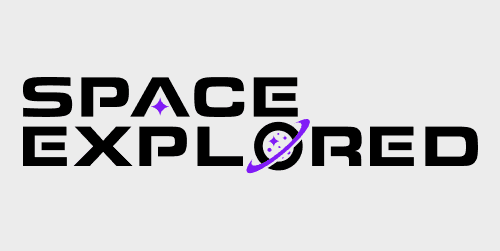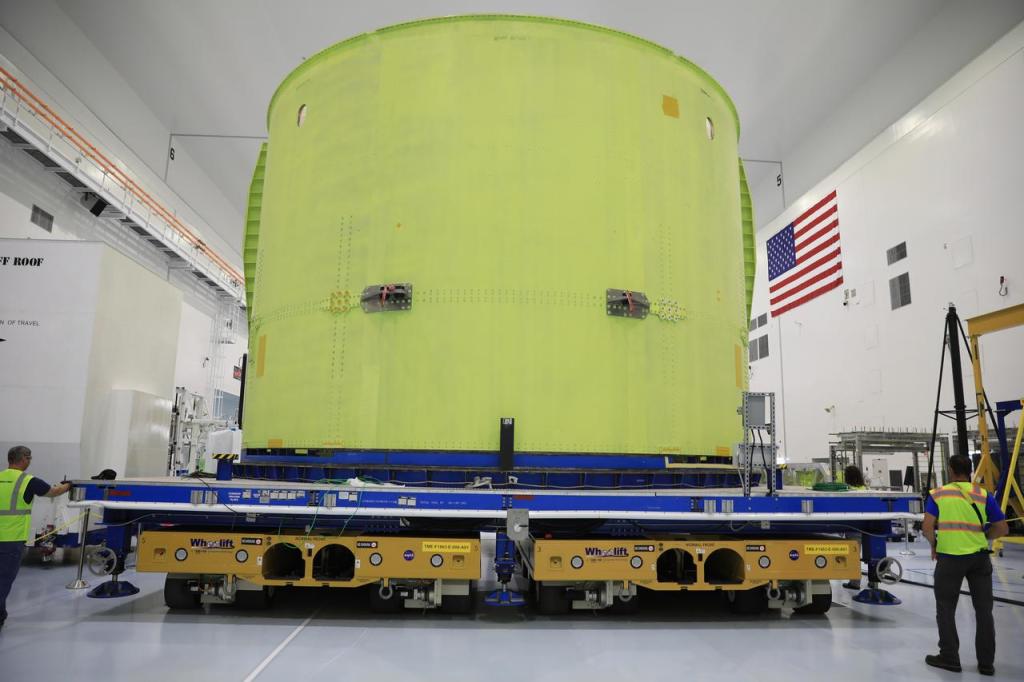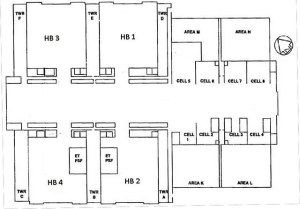
Earlier this month, NASA moved the SLS engine section for Artemis 3 into the Space Station Processing Facility (SSPF) at the Kennedy Space Center in Florida. This comes as a distinct change from previous SLS core stages like the recently flown Artemis 1 and Artemis 2, which are still being assembled at NASA’s Michoud Assembly Facility in Louisiana. The biggest questions arising from this change are what NASA’s plan for Artemis 3 is and onwards and what stirred this sudden change.
Presently, NASA is planning on performing the component and parts installation for the engine section in the SSPF. The SSPF is where International Space Station components are prepared and processed before being shipped off to be integrated with their launch vehicles. With components for NASA’s upcoming Gateway station, DreamChaser spaceplane mockups, and various new modules or spacecraft bound to the ISS such as the new roll-out solar arrays, Cygnus spacecraft, and even the Orion Spacecraft Adaptor with the CubeSats that recently launched on Artemis 1.
However, Boeing has adjusted its path for future SLS core stages. Expanding production out to Florida utilizing the SSPF’s high bay to install the most complicated parts of the engine section before rolling the completed engine section to the Vehicle Assembly Building (VAB). Of note is that currently only 1 of the 4 ‘high bays’ of the VAB is currently configured to support SLS operations- High Bay 3. As such, to make room for a dedicated space for integrating the core stage into the engine section, Boeing will begin overhauling and upgrading High Bay 2, the high bay diagonal from High Bay 3. Core stages will be integrated using a pedestal to hold and mate the 2 components.

High Bay 2 was initially made available to commercial customers in 2015 for use. Notably, Northrop Grumman’s planned OmegA rocket was slated to be assembled and use High Bay 2. However, Northrop failed to win DoD contracts with OmegA and was scrapped. With no further commercial requests for the bay, High Bay 2 has since been left empty. Formerly the High Bay helped assemble Apollo 10, Apollo 13 (partially), and Skylab 2. On top of using High Bay 2 for component stacking, it can also help store additional completed core stages prior to being moved across the VAB to High Bay 3 for final integration between the two massive solid rocket motors on the Mobile Launchpad.

A notable benefit of using High Bay 2 is it was used during the Shuttle program to store and check out external tanks in High Bay 2 and 4 (High Bay 4 being the bay directly across from High Bay 3, adjacent to High Bay 2). Parts of what was formerly used for the Shuttle program will be reused for SLS core stage processing.
This change is intended to begin with Artemis 3 and continue onwards for all future SLS core stages, meaning that Artemis 1 and 2 will be the only core stages to leave Michoud in a completed state.
Boeing’s goal with this shift is to expedite the manufacturing and production of SLS core stages. John Shannon, Boeing’s Program Manager for SLS reported the following to NASASpaceFlight, “We did facility studies, and with the addition of the entire Exploration Upper Stage set of tooling and assembly processes, it is really tight in the factory to be able to get two Core Stages out per year”. John Shannon reported they considered building new facilities at Michoud but noted this, “We also wanted to reduce the overall cost of the rocket — we’ve been working on affordability a lot, so we kind of turned our eyes to KSC because there are some really top-flight facilities that were being underused or not used at all”.
Shannon noted the following benefits of this change- “We’re estimating around 50 million dollars [of savings] per Core, and we can do more than two Core Stages per year by utilizing the additional facilities”.
Reportedly demolition contracts have been let, and Boeing hopes to have the tooling for the integration process ready and available before the end of 2023.
FTC: We use income earning auto affiliate links. More.




Comments